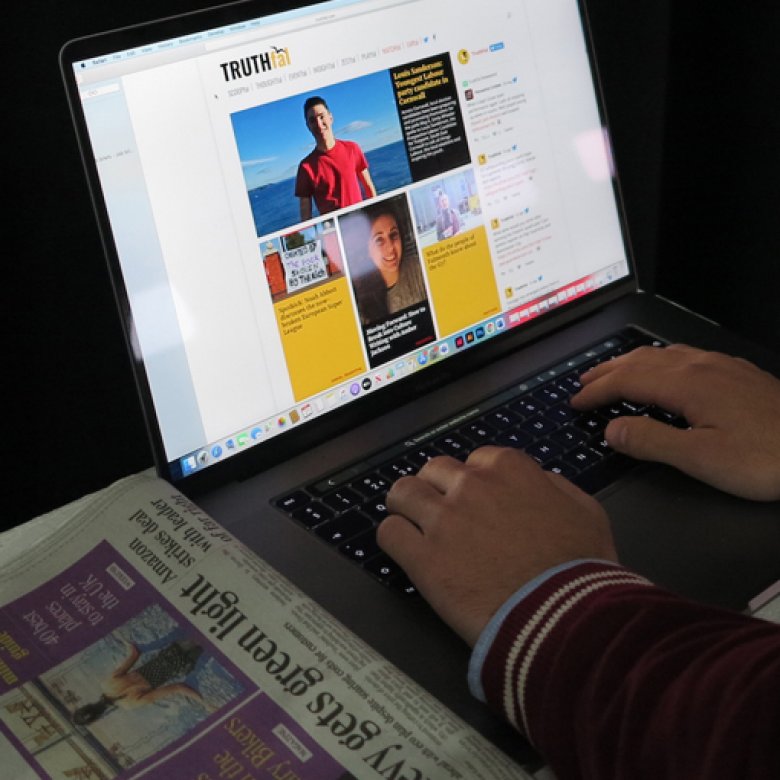How to live blog: 5 tips to get started

This piece was written by Dr Kit Chapman, award-winning journalist and Course Leader of Journalism MA (Online)
A live blog is a great way to cover major news stories or events as they unfold. While live blogging is easier if the event is planned – such as a sporting occasion, a major award ceremony or a political meeting – live blogs are also a vital tool to keep your audience informed about breaking news, such as international conflicts or deaths of influential figures.
Running a live blog is easy – it’s simply a matter of regularly posting updates to an existing story in reverse chronological order (i.e. the most recent event first). But there are still points all journalists must consider if they want to fully leverage this valuable resource.
To help you get the most out of live blogging, here are five tips to get started:
1. Be selective with your live blog event
Live blogs are exciting to run but they are also resource-intensive, often taking up an entire day that could be spent writing, editing and working on other stories. Decide which stories are important enough for you to cover. If in doubt, always ask whether this format benefits and interests your readers. There’s no point live blogging the Academy Awards if you’re working on a magazine for model plane enthusiasts!
Of course, if you’re a well-staffed publication such as The Guardian, there are no such worries – you can even live-blog every county cricket match! Remember, keep your editorial voice appropriate for the occasion; be jovial and fun if the event is a celebration, and more serious in tone if it’s a sombre occasion.
2. Prepare before the event
Sporting events are on the calendar for years in advance, major awards happen at scheduled times, and even surprise events on the world stage, such as the Russian invasion of Ukraine, are often signposted for weeks in advance. Take time to plan what you’re going to do – when will your blog coverage start, what will it cover, and when will it end.
Do your research and prepare a list of facts and figures you can reference in the live blog – the last thing you want to do is be scrambling for content while you’re typing away. This could include the biographies of nominees, maps showing where events are occurring, or data about previous events. You can even do deep dives into facts and figures, as seen in Chemistry World’s live-blogs of the Nobel prize ceremony. Planning doesn’t take long (you can get some basic facts and brief yourself in less than an hour) but adds professionalism and authority.
3. Keep a few posts in your pocket
In any live blog, there will be moments when not much is happening. That’s why it’s important to have a few pre-prepared posts ready to insert for when you need to add content to keep readers’ attention.
For example, the BBC’s coverage of the Russian invasion of Ukraine is updated with statements from both sides – including clarification of whether the reports are verified – but also adds in content from elsewhere, such as opinion from correspondents and bullet-point summaries of what’s happened. This provides regular coverage and means readers don’t have to endlessly scroll from the start of the blog to avoid missing useful information.
4. Get your audience involved
Live blogs are designed to make the audience feel connected and part of the event, so it’s always important to get your readers involved. There is a reason that phone-in shows on radio are so popular – people like to have their say. Think about sharing your favourite tweets, reactions on social media from both celebrities and the general public, or comments you’ve been sent by email or text.
That said, always be mindful of your responsibilities as a journalist around fact-checking and libel: if you’re not sure if something is offensive, misleading or outright wrong, don’t publish it.
5. Live blogs don’t always have to be live
Finally, remember that live blogs, while a great format for breaking news, don’t have to cover live events. This format has been trialled to provide immersive, non-fiction coverage of historical events too, such as the first atomic bomb test or the Battle of Waterloo. Such accounts benefit from being able to show all sides of an event – something that’s often very difficult for breaking news – as well as being able to use images to give greater context about what’s going on.
Ultimately, live blogging is another tool in a journalist’s kit to try and explain a story to their readers and give them insight.
If you’re interested in learning more about live blogging as a platform for news reporting, then join our online master’s degree in Journalism. Learning from journalists and news product professionals, you’ll gain specialist skills in promoting compelling news, videos, and live events.




